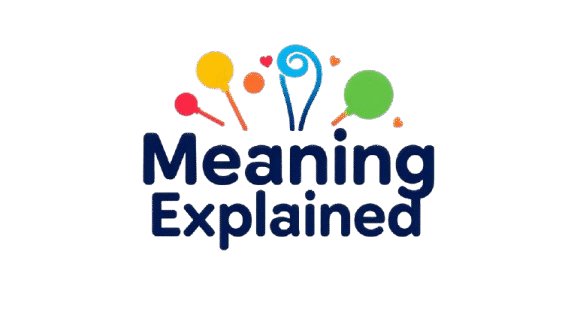The word “mitigate” is often used in news, work, and school, but many people are unsure what it really means. It is a formal word that sounds a bit serious. Knowing its meaning can make reading and speaking easier. It is a useful word for everyday life.
In simple terms, “mitigate” means to make something less bad or less serious. People use it when talking about problems, risks, or difficult situations. It is common in reports, articles, and conversations about solutions. Understanding it can improve your vocabulary.
Learning how to use “mitigate” in daily speech helps you sound clear and confident. It is a polite way to talk about fixing or reducing problems. This guide will explain its meaning and give easy examples. That way, you can use it the right way..
🌟 What Does “Mitigate” Stand For and Mean?
To mitigate means to reduce the severity, intensity, or harm of something. It’s about softening the impact or making a tough situation more bearable. Derived from the Latin mitigate (“to soften” or “make mild”), it’s used in various contexts to describe actions that lessen negative effects.
In everyday English, mitigate implies proactive steps to manage risks, ease discomfort, or improve conditions without fully eliminating the issue. It’s a versatile word for professional, academic, or casual communication.
Key Components of the Definition
- Severity Reduction: Lessening the intensity or harshness of a negative situation. Example: “Sunscreen mitigates the risk of sunburn.”
- Risk Management: Taking proactive steps to lower potential dangers or threats. Example: “Flood barriers mitigate property damage.”
- Impact Softening: Easing emotional or physical discomfort caused by an issue. Example: “Therapy mitigates feelings of anxiety.”
- Proactive Action: Implementing measures to prevent or reduce harm before it worsens. Example: “Regular maintenance mitigates equipment breakdowns.”
- Partial Solution: Focusing on making a problem more manageable, not fully eliminating it. Example: “Subsidies mitigate economic hardship for families.”
- Versatile Application: Used across contexts like healthcare, business, or daily life to address varied challenges. Example: “Meditation mitigates stress in everyday situations.”
🛠️ Examples in Context

Here are practical examples showing how mitigate is used:
- Healthcare: Painkillers mitigate discomfort during recovery.
- Environment: Reforestation mitigates carbon emissions.
- Business: Hedging mitigates financial losses in volatile markets.
- Safety: Helmets mitigate head injury risks in sports.
- Education: Extra classes mitigate learning difficulties.
- Technology: Firewalls mitigate cyberattack risks.
Formal and Polite Alternatives
- Alleviate: Softens impact in formal settings.
Example: “Charity programs alleviate poverty concerns.” - Ameliorate: Suggests improvement in serious situations.
Example: “New policies ameliorate workplace issues.” - Ease: Gently reduces burden in polite communication.
Example: “Flexible hours ease employee stress.”
Professional and Neutral Alternatives
- Reduce: Focuses on measurable decrease.
Example: “Automation reduces production errors.” - Minimize: Emphasizes limiting risks.
Example: “Training minimizes workplace accidents.” - Diminish: Suggests gradual reduction.
Example: “Updates diminish software glitches.”
Casual and Conversational Alternatives
- Lessen: Informal, implies slight reduction.
Example: “A break can lessen your frustration.” - Tone down: Reduces intensity casually.
Example: “Tone down the argument to avoid drama.” - Soften: Eases emotional or physical impact.
Example: “A kind word softens their disappointment.”
When to Choose Which Term?
- Formal Reports or Speeches: Use alleviate or ameliorate for professional or academic audiences to convey sophistication and precision. Example: “Policies to alleviate poverty were discussed.”
- Business or Technical Writing: Opt to reduce or minimize in emails or reports for clear, neutral, and professional communication. Example: “New software reduces operational errors.”
- Casual Conversations: Choose lessen or soften when chatting with friends or in informal emails for a relaxed tone. Example: “An apology can soften the tension.”
- Emotional Contexts: Use ease or soften when addressing feelings or interpersonal issues to emphasize empathy. Example: “Kind words ease emotional distress.”
- Tangible Outcomes: Select, reduce or diminish for measurable results, like costs or risks, in data-driven discussions. Example: “Training diminishes workplace accidents.”
- Audience Sensitivity: Pick alleviate for stakeholders or lessen for peers to match the audience’s expectations and tone. Example: “Workshops alleviate staff concerns.”
Examples Revisited with Alternatives
- Formal: “Reforestation efforts alleviate environmental degradation.”
- Professional: “Regular audits minimize compliance risks.”
- Casual: “A quick apology can soften hurt feelings.”
💬 Choosing the Right Tone: Nuances to Look For

- Audience Awareness: Use alleviate for formal audiences like stakeholders; lessen for friends.
- Purpose Focus: Choose reduce for tangible fixes (e.g., costs); ease for emotional relief.
- Emotional Distance: Formal words like ameliorate maintain professionalism; casual ones like soften build warmth.
💼 “Hiatus” Meaning in Relation to “Mitigate”
A hiatus is a pause or break in activity. It can serve as a tool to mitigate stress, fatigue, or other issues by allowing recovery time.
Example: “A project hiatus mitigated team burnout.”
Here, the break (hiatus) is the method to reduce negative effects, showing how the two words can complement each other.
11 More Detailed Sentences, Enhanced with Alternatives
- “Noise-canceling headphones alleviate distractions in open offices.”
- “Backup generators reduce downtime during power outages.”
- “Team-building activities ease workplace conflicts.”
- “Strong passwords minimize hacking risks.”
- “Community programs diminish local unemployment rates.”
- “A sincere apology softens family disagreements.”
- “A brief hiatus mitigates stress during tight deadlines.”
- “Training workshops alleviate confusion over new software.”
- “Stretching exercises lessen muscle soreness after workouts.”
- “Open communication eases tension in meetings.”
- “Scholarships mitigate financial barriers for students.”
FAQs
Why use “mitigate” instead of “reduce”?
Mitigate emphasizes softening severity or making a situation manageable, while reducing focuses on lowering quantity.
What is a good synonym for “mitigate” in a business email?
Minimize or reduce are professional, clear, and neutral choices.
Is “hiatus” always a good way to mitigate stress?
Not always. A hiatus helps when a break is practical but may cause issues like missed deadlines if poorly timed.
Can “mitigate” be used for emotional issues?
Yes, it’s common in phrases like “mitigate anxiety” or “mitigate grief.”
When should I avoid using “mitigate”?
Avoid mitigate when you mean fully resolving an issue, as it implies reducing severity, not eliminating the problem.
Final Word
To mitigate is to take thoughtful steps to soften the blow of a challenging situation, whether it’s reducing risks, easing emotional strain, or managing potential harm. Its versatility makes it a valuable word across contexts—formal, professional, or casual—allowing you to communicate efforts to improve conditions without implying a complete fix. By understanding its nuances and choosing the right synonym like alleviate, reduce, or lessen based on tone and audience, you can express ideas with clarity and precision.
Incorporating mitigate effectively, especially alongside related concepts like a hiatus for stress relief, enhances communication by showing proactive care. Whether you’re addressing business risks, personal stress, or environmental concerns, mitigate captures the essence of making things better, one manageable step at a time.

